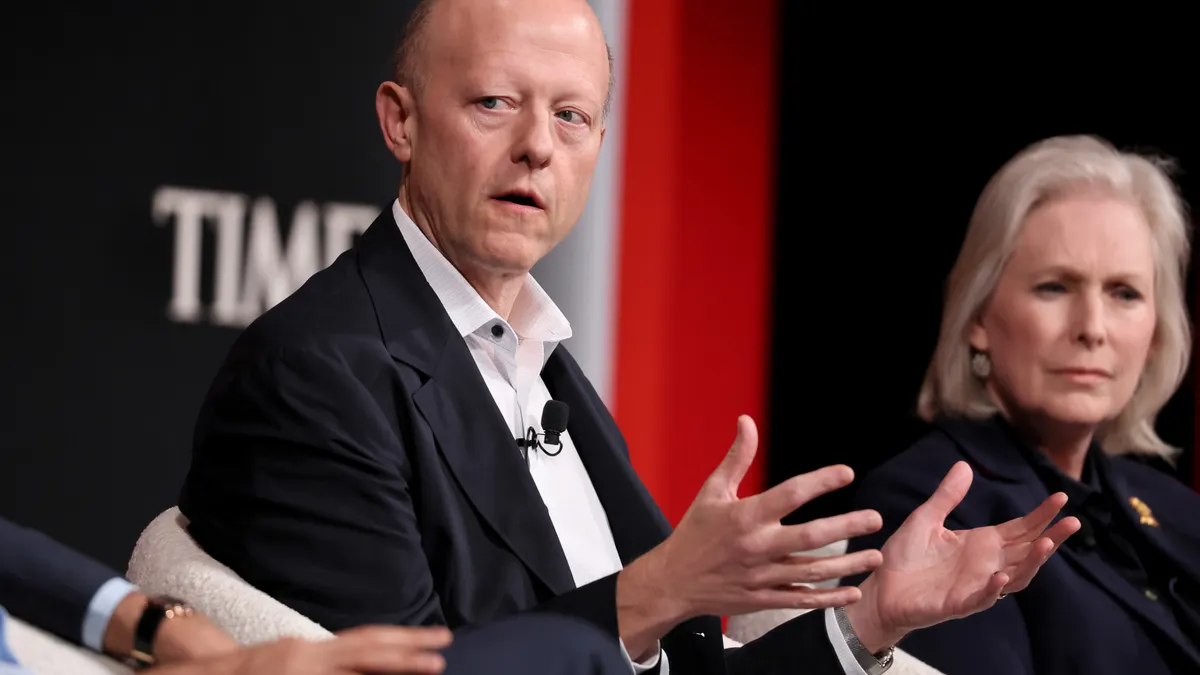The Senate lawmakers who passed the Guiding and Establishing National Innovation for U.S. Stablecoins, or Genius, Act on Tuesday aim to create a regulatory framework for the issuance of stablecoins — a step that could enable finance leaders to consider more use cases for the crypto asset.
The regulatory clarity the Genius Act, which has yet to pass the House, seeks to create in the cryptocurrency space will be a key factor in opening the door for wider adoption of stablecoins, especially by more conservative entities such as banks or executives like CFOs, said Paul Brody, EY’s global blockchain leader.
While stablecoins and their issuers have been around for a number of years, larger incumbents or entities “need more than just that the other companies aren't being prosecuted” to participate in the space, Brody told CFO Dive. “They need some kind of green light.”
Raising the bar
The Act, passed in a 68-30 vote Tuesday, aims to tackle some of the historic murkiness that has marked the digital asset space and the use of stablecoins — which have their value pegged to another asset, typically a fiat currency like the U.S. dollar.
“With the GENIUS Act, we’re bringing clarity to a sector that’s been clouded by uncertainty and pro.ving that bipartisan, principled leadership can still deliver real results for the American people,” Sen. Tim Scott, R-SC, the chair of the Senate Banking Committee and a co-sponsor of the bill, said in a statement Tuesday.
For instance, the bill, as its stands, notes that “permitted payment stablecoins are not considered securities under securities law,” a classification that aims to ease previous contention between certain industry players and the Securities and Exchange Commission — which, under previous Chair Gary Gensler, pursued several cases against crypto firms for what the regulator deemed the illegal sale of securities.
The Genius Act also lays out potential requirements for “permitted issuers” of stablecoins, including the need to keep reserves and to publicly disclose their redemption policies, according to a summary of the bill.
The framework the legislation aims to put in place can help ease some of the concerns that may be holding back risk-averse CFOs and finance chiefs from making use of stablecoins — which, as the Trump administration looks to create a friendlier relationship with the digital asset space, have fallen under increased scrutiny by business leaders for use cases such as cross-border payments.
The establishment of a clear regulatory framework will also help to drive up the “quality of competition” inside the stablecoin industry, Brody said.
“It's going to raise the quality bar in the marketplace, and it's going to make it much easier for people to benchmark what a reasonable value proposition looks like,” Brody said.
Sharpening the controls
The Senate’s passage of the Genius Act comes amid a broader swell of interest in stablecoins by both businesses and regulators. Among other initiatives, the Trump administration has issued plans to set up a national digital asset reserve and created working groups for stablecoins.
Advocates and players in the crypto industry have lauded such attempts as key steps that can help enmesh digital assets further into the mainstream financial fold.
Trade organizations have also weighed in on the need for clear guidelines in the space. The American Institute of Certified Public Accountants, for example, issued a call for comment ahead of the Senate’s vote on the Genius Act on proposed criteria for stablecoins, aimed at creating greater trust and transparency surrounding their use for investors, regulators, and shareholders, according to a recent press release.
“Because controls surrounding digital asset operations are an integral part and foundation for the reliability of information presented by those entities, it is vital that those controls are implemented, operated and monitored,” the AICPA said in the release.
As businesses examine the potential uses of stablecoins, keeping a careful watch on the regulatory environment is crucial. For CFOs looking at how to use stablecoins for cross-border payments, particularly, their usage has “got to be legal on both sides of the transaction,” Brody said.
A wider shift to stablecoin usage for international payments will be dependent on those regulatory approvals, he said. As that space slowly matures, “I think you'll see CFOs in these supply chain ecosystems start to do surveys of their business partners: ‘Who's on the networks, who's got stable coins?’” he said.















